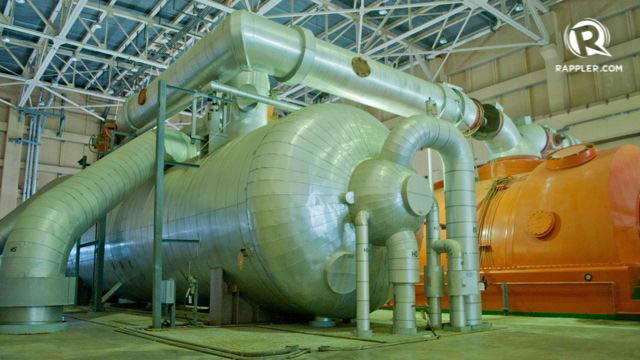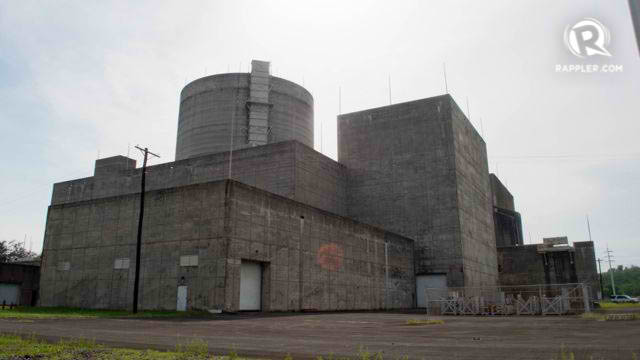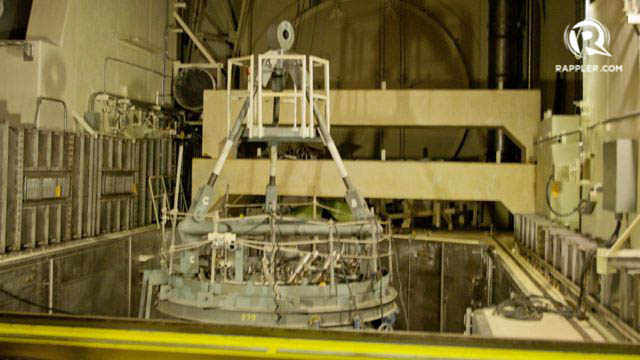SUMMARY
This is AI generated summarization, which may have errors. For context, always refer to the full article.

MANILA, Philippines – Former Pangasinan Rep Mark Cojuangco called on the government to consider recommissioning the Bataan Nuclear Power Plant (BNPP), saying it is the only technology with a “real chance” of lowering the price of electricity.
During a media tour of the mothballed facility on May 28, Cojuangco said, “The renewable energies unfortunately are not ready. They will not cheapen our power, they will only make it more expensive.”
He added a $1-billion fund could make the BNPP operational and ready to generate power.
The $1 billion rehabilitation cost will be spent upgrading and replacing 25% of the facility’s equipment.
In the 14th Congress, Cojuangco filed House Bill 4631 or the Bataan Nuclear Power Plant Commissioning Act of 2008. But the bill stalled after the 2011 disaster at the Fukushima Daiichi nuclear plant in Japan.
The pro-nuclear lobby faces strong opposition from environmental groups like Greenpeace. In a position paper presented to the House Committee on Appropriations in 2009, the group questioned the “faulty economics” of nuclear power compared to its suggested alternative: renewable energy.

Why go nuclear?
The BNPP was completed in 1984 during the Marcos administration, but was shelved by the succeeding Aquino administration in the aftermath of the Chernobyl nuclear disaster in Russia in April 1986.
But Cojuangco said a hot functional test done in May 1984 is proof the power plant is ready to operate. During the test, Cojuangco said the plant was able to generate 5 MW of power.
Napocor general manager Mauro Marcelo said the BNPP’s 620 MW capacity can supply the 10% power requirement of the Luzon grid. In the Department of Energy’s power outlook for May, Luzon’s peak demand may reach 5,521 MW.
Marcelo said nuclear power will bring down the high costs of electricity in the Philippines.
“When we operate the nuclear power plant in the first 20 years, the cost of electricity (per kilowatt hour) is about P1. It will go to about P2 per kWh for the transmission cost. With coal, it can cost about P6.”

Non-base load energy
For pro-nuclear advocates, the problem with renewable energy is its non-base load nature. Baseload sources of power – such as coal, gas, and nuclear – provide continuous energy to meet demand. Renewable energy sources on the other hand generate power at certain times and conditions.
Nuclear energy advocates also hit the feed-in tariff (FiT) scheme in the Renewable Energy Act of 2008. The FiT scheme mandates a fixed rate collected from power consumers to cover energy production from renewable sources.
The system aims to provide investors an incentive as it assures future cash flows and ensures the economic viability of their projects.
In July 2012, the Energy Regulatory Commission approved FiT rates of P5.90/kWh for hydropower projects, P6.63/kWh for biomass, P8.53/kWh for wind, and P9.68/kWh for solar. The approved rates are lower than what the National Renewable Energy Board proposed in May 2011.
Various groups opposed the measure because of the added rates on consumers. Renewable energy advocate group World Wide Fund for Nature though said the estimated increase due to the system only amounts to five centavos per kilowatt hour.

Cojuangco though said he would be open to supporting renewable energy if it can be proven to be economically viable in terms of infrastructure investments and power generated.
He added renewable energy proponents fail to consider additional investment needed in promoting renewable energy.
“What people don’t talk about when they talk about renewable energy is the investment needed to back it up which means a double investment,” Cojuangco said.
“They’re being subsidized under the law so that we make their inefficient technology economically viable by paying more. How does that make power cheaper? It doesn’t. And the non-base load of renewable energy makes our power less reliable,” he added.
The costs of going nuclear
Greenpeace Southeast Asia Climate and Energy Campaigner Anna Abad disputed claims by the pro-nuclear lobby, arguing the massive costs in operating nuclear facilities outweigh its power generation benefit.
In its position paper, Greenpeace cited operations and maintenance costs, waste storage costs, and decommissioning costs as reasons behind what it called the “faulty economics” of nuclear power.
Greenpeace said the recommissioning budget estimate of $1 billion will not be enough to cover actual costs. The group pointed to historical data showing actual costs grossly exceeded projected figures, citing nuclear facility constructions in India, the United States and Finland.
Greenpeace added, “The BNPP’s age and document defects, this cost, an estimate not actually provided by experts in the first place, may well be exceeded.”
In a 2009 forum, at the height of discussions on the merits of Cojuangco’s HB 4631, professors from the University of the Philippines said government should focus on boosting geothermal power capacity in Visayas and Mindanao instead of re-opening BNPP.
Giovanni Tapang, chair of AGHAM and assistant Professor at the University of the Philippines’ National Institute of Physics, said geothermal power is a better and cheaper option compared to nuclear energy. He said a geothermal power plant, which costs $1.43 billion, can generate 750 MW of energy.
In contrast, the BNPP can generate 620 MW of energy, but will cost $1 billion to recommission – an addition to the $2.3 billion the Philippine government already spent on its construction.
Abad said investments should be redirected towards the “tried and tested” path of renewable energy instead. “Once you put investments in nuclear power, it’s investment away from renewable energy,” she said.
The government is also pursuing the development of renewable energy through the National Renewable Energy Program, which came into effect in 2011. The program aims to increase renewable energy capacity from its current level of 5438 MW to 15,304 MW by 2030. – Rappler.com
Add a comment
How does this make you feel?
There are no comments yet. Add your comment to start the conversation.